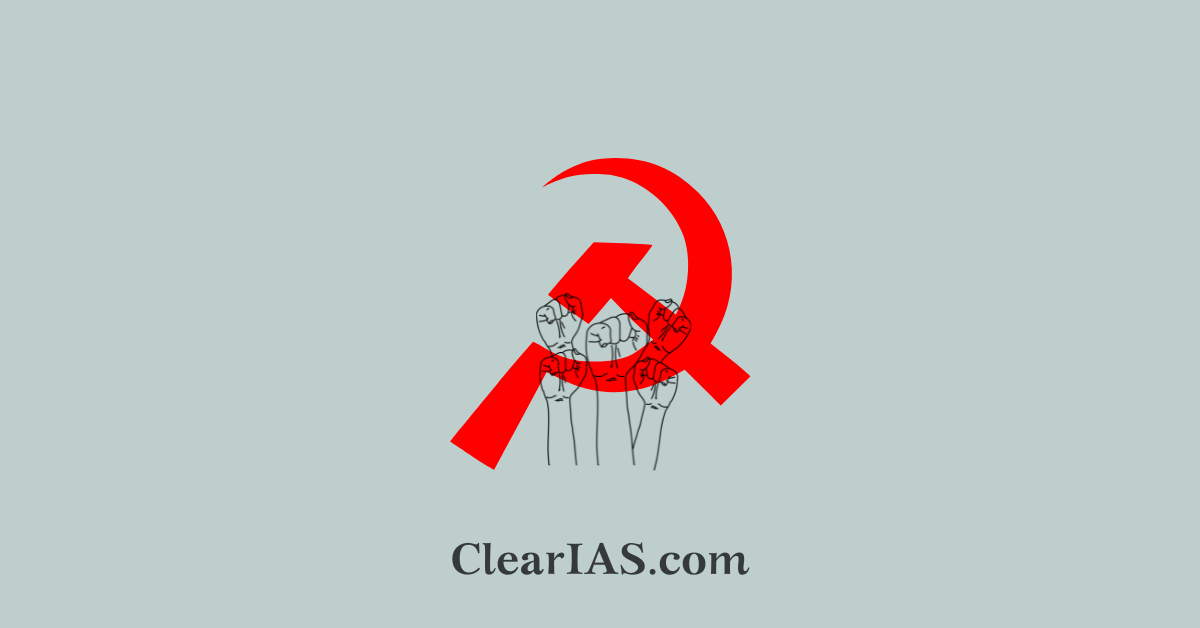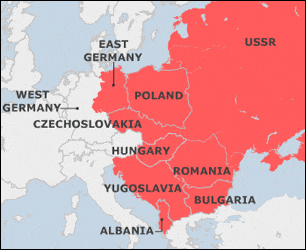
The fall of communism is a complex historical process that occurred primarily in the late 20th century, resulting in the collapse of communist regimes and the end of the Cold War. It had far-reaching global implications and marked a major turning point in world history. Read here to learn more about the events that unfolded.
Communism – during the period from the 1920s to the 1980s – remained a prominent alternate philosophy to the Capitalism of the West. USSR (a confederation of 15 republics) was the leader of the Soviet Bloc. But around 1989, almost all of a sudden, many nations that leaned towards communist ideologies separated from it.
The revolutions of 1989 were just the beginning. It spread to the Soviet Bloc and finally led to the disintegration of the Soviet Union. The events – more or less led to the end of the Second World, which was based on Communist ideology.
This post is about a broad topic that includes anti-communist movements in the period 1989-1992 in many nations – Poland, Bulgaria, Czechoslovakia, Hungary, Romania, Russia, and even China. While discussing the fall of communism – a broad topic – the ideal point from where we should start is ‘the revolutions of 1989’.
Also Read: Spread of Communism
Revolutions of 1989

The Revolutions of 1989 were part of a revolutionary wave that resulted in the Fall of Communism in the Communist states of Central and Eastern Europe. The period is sometimes called the Autumn of Nations. There were many revolutions in the period 1989 to 1992, against the existing communist governments in Europe.
As we discussed in the last post on this section, there were mass protests, many communist governments started to fall in countries like Poland, Hungary, etc (1989). Revolutions in East Germany resulted in the fall of Berlin Wall in 1989 November. Revolutions didn’t end there, they went on disintegrating the mighty USSR (1991).
Poland – The Solidarity Movement:
- The revolution began in Poland in the 1980s with the emergence of the Solidarity movement, led by Lech Wałęsa. Solidarity, initially a trade union, evolved into a broad-based political and social movement that called for political reform and workers’ rights.
- In 1989, negotiations between the Polish government and Solidarity led to the first partially free elections in the Eastern Bloc. Solidarity won a landslide victory, signaling a shift in the political landscape.
Hungary – The Opening of the Iron Curtain:
- Hungary played a crucial role in the events of 1989. In May 1989, the Hungarian government began dismantling the barbed wire fence on its border with Austria, effectively opening the Iron Curtain.
- This move allowed East Germans to travel to the West through Hungary, setting in motion a wave of emigration that eventually led to the fall of the Berlin Wall.
East Germany – The Fall of the Berlin Wall:
- On November 9, 1989, after weeks of peaceful protests, the East German government announced that its citizens were free to travel to West Germany. This announcement led to a massive celebration at the Berlin Wall.
- The fall of the Berlin Wall symbolized the end of the division between East and West Germany and became an iconic moment in the Revolution of 1989.
Czechoslovakia – The Velvet Revolution:
- In Czechoslovakia (now the Czech Republic and Slovakia), the Velvet Revolution unfolded in late 1989. Led by dissident figures like Václav Havel, mass protests and strikes forced the communist government to resign.
- Havel became the country’s first post-communist president, and Czechoslovakia transitioned to democracy.
Bulgaria, Romania, and Other Countries:
- Bulgaria and Romania also experienced anti-communist protests and changes in leadership during 1989. In Romania, the revolution turned violent, resulting in the overthrow of dictator Nicolae Ceaușescu.
- Other countries in the region, such as East Germany, Poland, and Hungary, underwent rapid political transformations, transitioning from communist rule to democratic governance.
Impact on the Cold War:
- The events of 1989 had a profound impact on the global stage. The end of communist rule in Eastern Europe signaled the weakening of the Soviet Union’s influence in the region and marked the beginning of the end of the Cold War.
Reunification of Germany:
- The reunification of Germany on October 3, 1990, was a significant outcome of the Revolution of 1989. East and West Germany officially became a single nation again, ending decades of division.
Anti-communist sentiments
Economic inefficiency and stagnation plagued many communist countries. Centralized planning, state ownership of industries, and lack of incentives for innovation led to economic problems, including shortages, low productivity, and a declining standard of living for citizens.
Anti-communist movements in the period 1989-1992 in many nations – Poland, Bulgaria, Czechoslovakia, Hungary, Romania, Russia, and even China – toppled many of the authoritarian regimes in Europe, establishing capitalist, liberal democracies.
Most of the mass movements were non-violent. Romania was an exemption. The anti-communist movements gained success in most countries, but it was suppressed in China.
Fall of Communism-Events

- Peaceful transfer of power to non-Communist governments in Poland, Hungary, East Germany, Czechoslovakia, Bulgaria, and Albania.
- German reunification: East Germany with West Germany.
- Violent transfer of power to a non-Communist government in Romania.
- The breakup of the Soviet Union.
- End of the Soviet Union as a superpower.
- Formation of the Russian Federation.
- Breakup of Czechoslovakia: Czech Republic and Slovakia.
- Breakup of Yugoslavia: Bosnia and Herzegovina, Croatia, Macedonia, Slovenia, Serbia and Montenegro.
- Violent suppression of the Chinese democracy movement: Tiananmen Square protests of 1989.
- Dissolution of the Warsaw Pact.
- All Soviet military troops withdrew from Afghanistan.
- Intensification of the process of European integration.
- Skepticism about Communism all over the world is associated with decreasing support for communist parties, especially in Europe.
- Changes in dozens of other countries, especially involving the rise of consumerism.
- Yemeni reunification.
- New states were created from the former Soviet Union.
- The collapse of Communism in Mongolia, Ethiopia, and Yemen.
- Vietnamese occupation of Cambodia ends.
- End of the Cold War.
- The spread of American culture and capitalism to previously sealed-off Communist countries.
- Integration of most former Warsaw Pact members into NATO.
- United States sphere of influence grows.
- New World Order.
- Spread of electoral democracy.
Communism: Current Scenario
Though there are few Communist party representations in ruling coalitions in democratic countries, at present there are only five countries, where the communist party rules the state.
- China.
- Vietnam.
- Laos.
- Cuba.
- North Korea.
PS: Apart from North Korea, and to an extent in Cuba, all the present communist nations initiated market reforms under their single-party communist rule.
Questions for UPSC Mains
- Qn: The ‘Autumn of Nations’ achieved what the ‘Springtime of Nations’ couldn’t achieve. Compare and contrast the revolutions of 1989 with the revolutions of 1848 in Europe. (Hint – Revolutions of 1848 were also known as the ‘Springtime of Nations’. They were a series of republican revolts against European monarchies in France, Germany, Italy, and the Austrian Empire. They all ended in failure and repression, and were followed by widespread disillusionment among liberals.)
- Qn: Even though the revolutions of 1989 toppled many communist regimes it was not successful in China. Trace the reasons.





you are so great CLEAR IAS………!!!!!!
Sir explain the shock therapy in post communist regimes
Sir apke free notes hindi me nhi hai plz add kare
Sir jo books list diya gaya hai mains ke liye wo gs1234 karke nhi hai kaise pata chalega ki wo mains ka kaun sa paper hai. Syllabus anusar de plz
Plz make the notes in bengali.
Plz Make a notes in Hindi